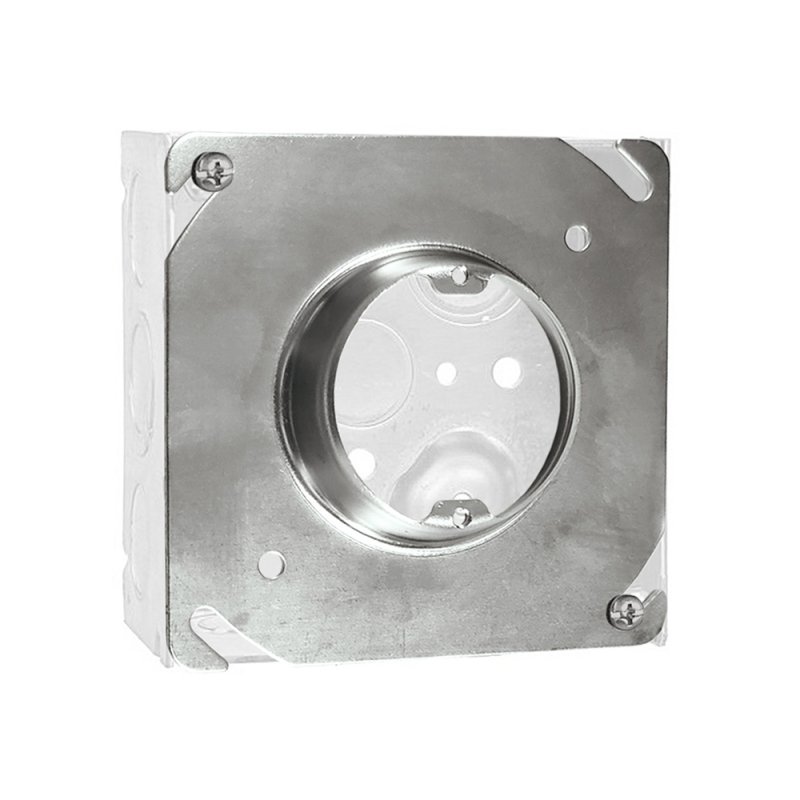
2: Using Table 314.16(A), how many 14 AWG THHN conductors are permitted in a 4×1.5-inch round box? Note that insulation isn't a factor.Įxample No. This answer comes directly from Table 314.16(A), which permits nine 12 AWG conductors in this size box. The answer is (b), 4×1.5-inch square box. 1: What size outlet box is required for six 12 AWG THHN conductors and three 12 AWG THW conductors? Let's work through a few examples to clarify the calculation.Įxample No. Note: Table 314.16(A) only applies if the outlet box contains no switches, receptacles, luminaire studs, luminaire hickeys, manufactured cable clamps, or grounding conductors, although this is unlikely. When the conductors running to the box are all the same size (insulation doesn't matter), you can use Table 314.16(A) to determine the number of conductors permitted in the outlet box or the size outlet box required for the given number of conductors. Sizing boxes when all conductors are the same size.

The volume of a box includes its assembled parts, including plaster rings, industrial raised covers, and extension rings. The minimum box volume must allow for conductors, devices, and fittings. In fact, Table 314.16(A) tells you the size of the most common standard boxes and how much they can hold.
#BOX WITH A PLASTER RING. INSTALL#
Follow these guidelines for choosing your object.Have you ever wondered if the outlet box you're planning to install is large enough? What if a box doesn't even have its capacity marked on it? The answers to those questions lie in the requirements of Art. Something without holes or porous surfaces.

Simple object to cast, such as a figurine, a light bulb.Pinkysil or other 2 part silicone mixture (this activity used about $10 of pinkysil).If this kind of silicone is out of your price range there are some hardware store silicone hack recipes if you have time to experiment, or latex is cheaper though not quite as easy and reliable for beginners. Don’t pour a silicon cast in a silicone mould or it will stick to itself.
#BOX WITH A PLASTER RING. SKIN#
Silicone may be the most expensive material listed here but it’s also one of the easiest to work with: skin safe, quick curing and the moulds are very durable, flexible and able to cast lots of different materials.īut here’s the first rule of casting: never like with like. A bucket of water and sponge as well as a cloth for any spills.A couple of plastic drop sheets and/or old sheets (whatever you would use for messy activities like painting).These are not the precise, technical methods that you would use for a beautiful lost-wax bronze sculpture but they are quick and easy for beginners of almost any age.

So here I’ve put together my favourite techniques for beginners, all easy, pretty cheap and with a range of materials from the craft box, the hardware store or speciality suppliers so you can pick and choose what level of effort and experimentation you’re up for. Casting was also a common method of artistic production in the Roman Empire, from decorative rims to jewellery and mass production of statues.Ĭasting and mould making can be incredibly complex and challenging, but it can also be as easy as brushing on a piece of wet paper pulp or sticking your fingers into a cup filled with silicon. This technique has enabled detailed body casts to be made of these first-century AD Romans in their final hour and has even been used to investigate the type of plants they grew in their gardens. Casts have been produced from these ever since the clever Guiseppe Fiorelli, Director of the Excavations in 1864, decided to try pouring plaster into these mysterious hollows. The flows of fine ash that followed Vesuvius’ eruption created a kind of mould – a detailed hollow impression – where any organic materials once were. Lent by the Museo Archeologico Nazionale di Napoli.


 0 kommentar(er)
0 kommentar(er)
